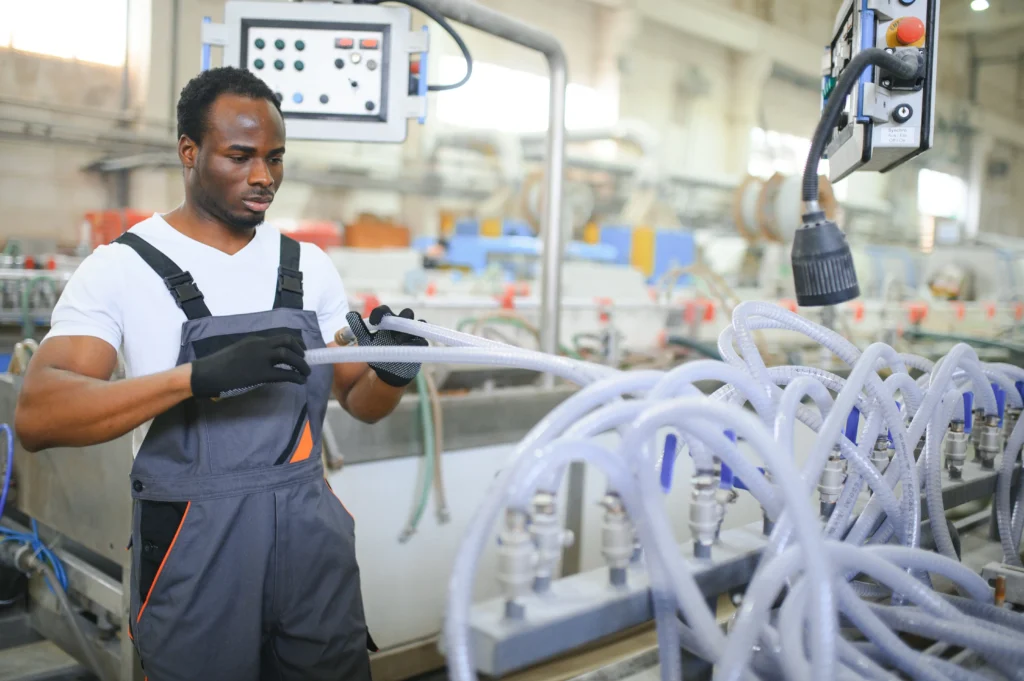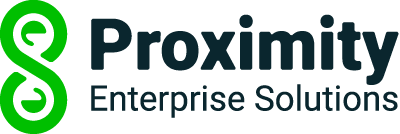Staying competitive and delivering efficiency in your manufacturing operations requires businesses to juggle multiple processes.
You’re not simply keeping up with production demands, you’re optimising processes, improving product quality and, if you’re able, using production monitoring technology to access real-time insights into shop floor performance.
Maybe your business is looking to implement a new manufacturing software application, or it is considering replacing an existing system that’s not quite providing the efficiency it is looking for.
Whatever the scenario, you’ve probably been asked to put together a business case to justify the investment.
But, the big question is: Where do you start?
This guide aims to provide a framework for that ERP software business case, including the areas you may need to consider and the type of questions you need to ask.
Having the right industry and process specific manufacturing ERP and MES System can deliver significant operational improvements, including (but, certainly not limited to):
- Enhanced Production Planning: ERP systems provide tools for better forecasting and manufacturing planning, which in turn helps manufacturers optimise their production schedules.
- Improved Quality Control: By monitoring production processes in real-time, the right ERP systems help maintain high-quality product standards and reduce waste. This becomes even more important in high compliance environments.
- Consolidating business functions: ERP systems consolidate vital business functions like inventory management, order processing, and production scheduling into a single platform. Having a ‘single source of the truth’ enhances collaboration and efficiency.
- Real-time data access: With ERP and MES systems, manufacturers can access real-time data, which is crucial for making informed decisions quickly and effectively.
Structuring your ERP system business case
There are, of course, many ways you can structure your ERP system business case.
Whatever structure you choose, it is vitally important to present the information in a clear and concise way so that the people making the ultimate decision on selecting the software can quickly and easily understand the benefits of investment.
This article is merely a suggested framework.
Feel free to copy, paste and edit the sections and any suggested content as you see fit.
If you’d like to discuss the ‘art of the possible‘ for an implementation, Tom Grigg, our Solutions Architect for DELMIAWorks is more than happy to schedule a call (absolutely free of charge and with no obligation). You can access his calendar and select a date for your discovery call.
Tom has over 15 years experience in manufacturing, five of which involved working for a plastics processor.
He has experience on both sides of the fence: evaluating, choosing, and implementing ERP systems as a manufacturer, as well as implementing ERP solutions to manufacturing companies.
Executive Summary
Your ‘Executive Summary’ briefly outlines the current challenges and your proposed solution (your chosen ERP & MES System) and the key benefits implementing the software solution will deliver (quantified where possible).
You should include a high-level financial overview to support the investment.
Introduction
Provide background on your business, your current manufacturing operation and the objectives for the business case.
It is also important to explain why the investment in new manufacturing is critical now.
Your business or industry might be facing increased competitive pressure, or it might have growth objectives that are achievable with the current ‘tech stack’.

There might be new compliance regulations or you’re recommending moving into manufacturing products that deliver a higher margin, but come with increased compliance.
Rising material costs might be reducing margins or customers are demanding shorter lead times, whatever the reasons, you need to highlight these in your final report.
Current situation: Where are we now?
Detail the ‘as is’ state of the operation. Layout the pain points and inefficiencies as you see them.
Some of the key challenges we see in other manufacturing businesses include:
- Data fragmented across the operation: production data, inventory levels, order status and quality metrics ‘live’ in multiple spreadsheets or software applications. This leads to inconsistencies and delayed reporting.
- Lack of real-time visibility from the shop floor: an absence of real-time production monitoring makes it difficult to identify bottlenecks, machine downtime or quality deviations quickly.
- Inefficient production planning & scheduling: manual or semi-manual scheduling of machines is complex, error-prone, and struggles to adapt to urgent changes or unexpected issues. This results in inefficient machine utilisation and missed delivery dates.
- Poor inventory management: inaccurate stock levels lead to overstocking (tying up capital) or understocking (causing production delays and rush orders for raw materials or components).
- Quality control gaps: manual data collection for quality checks delays identification of process issues and limits comprehensive traceability from raw material to finished product.
- High operational costs: inefficiencies in staffing, material waste, excessive downtime and rework contribute to higher manufacturing costs.
- Limited scalability: current systems cannot easily support increased production volumes, new product introductions or expansion into new markets and / or production processes.
- Poor customer satisfaction: inaccurate lead times and missed delivery dates negatively impact customer relationships.
- Inaccurate job costing: challenges capturing the true costs of labour, materials and energy costs etc. per job means costing projects is difficult.
- Limited capacity planning: not being able to accurately understand machine and / or labour capacity leads to either over-commitment or underutilisation.
- Traceability issues: challenges in tracing raw materials through production to finished goods, which is especially important for heavily regulated industries.
- Maintenance issues: a lack of insights into machine performance and uptime leads to reactive maintenance and disrupted production schedules.
Defining project objectives & aligning with strategic goals
Here’s your opportunity to define what the implementation of a new ERP & MES system is going to achieve. Example objectives (that can also be used to evaluate shortlisted solutions) could include:
- Reduce production lead times by X% within Y months.
- Improve on time delivery performance to X%.
- Decrease material waste by X%.
- Increase overall equipment effectiveness (OEE) by X%.
- Improved data accuracy for costing and forecasting by X%.
- Real-time shop floor visibility of all production orders.
We would also suggest documenting how the implementation project will also align with your company’s wider strategic goals.

Proposed solution
Now is your opportunity to introduce your proposed ERP and MES system.
An integrated solution will ensure seamless data flow from the top floor to the shop floor and back, enabling informed decision-making and automated processes.
Example use cases
This section can be used to detail specific pain points and illustrate how the new system will address them. The following are examples we have seen at other plastics manufacturing companies.
Optimising Production Planning and Scheduling
Scenario: a new large order is received from a key customer. The order requires specific injection moulding tooling and machine capacity.
Current issue: your business relies on legacy software, spreadsheets or whiteboards, which leads to errors, conflicts and an inability to react quickly to changes.
New ERP/MES functionality: the software will assess available capacity (machines, moulds, labour), raw material stock, and existing order commitments. It will then generate an optimised production schedule, considering tooling changeovers, preventative maintenance, and lead times.
Benefit: Reduced scheduling conflicts, minimal downtime between jobs, improved on-time delivery and a satisfied customer.
Real-time Production Monitoring & OEE Tracking
Scenario: A specific injection moulding machine experiences an unexpected fault, leading to downtime.
Current issue: Reactive maintenance due to lack of insights into machine performance and uptime.
New ERP/MES Functionality: sensors on the machine automatically report its status to the MES System. Operators can log reasons for downtime directly into the system. The MES calculates OEE (Overall Equipment Effectiveness) in real-time for each machine and line.
Benefit: Immediate identification of production issues, reduced downtime, accurate OEE metrics for continuous improvement initiatives, and better resource allocation.
Quality Management & Traceability
Scenario: a batch of plastic pellets used in production is suspected of being defective, and several finished parts from that batch fail quality checks.
Current issues: manual recording of quality checks, difficulty in tracing defects to specific batches or processes.
New ERP/MES Functionality: the system will track raw material batches from receipt through consumption, linking them to specific production orders, machines, and finished product batches. Quality control parameters are defined in the MES, and operators record inspection results directly. Non-conformance reporting and corrective action workflows are integrated.
Benefit: Enhanced product quality, full traceability (forward and backward), faster root cause analysis for defects, reduced scrap and rework.
Inventory and Materials Management
Scenario: the production team needs to know the exact quantity and location of a specific type of resin for an urgent order.
Current issues: Discrepancies between physical and recorded inventory, resulting in stockouts, overstocking, and production delays.
New ERP/MES Functionality: real-time inventory updates upon receipt, consumption, and finished goods production. Batch/lot tracking, expiry date management, and automated reorder points for raw materials and components.
Benefit: minimise inventory holding costs, reduced stockouts, improved material flow, and accurate inventory valuation.
Financial job costing
Scenario: the finance department needs to understand the true cost of producing a specific component.
Current issues: Difficulty in capturing true labour, material and overhead costs per job.
New ERP/MES Functionality: all operational data (material consumption, labour time, machine costs, scrap rates) flows into the ERP’s financial modules, enabling accurate job costing, variance analysis, and financial reporting.
Benefit: More accurate product costing, better financial forecasting, and improved profitability analysis.
Commercial details
In this section, provide information on the commercial aspects of implementing the new ERP & MES system, for example:
- Software Licensing: initial purchase and recurring fees.
- Hardware: servers, network infrastructure, shop floor terminals/tablets.
- Implementation services: consultancy, configuration, data migration, integration.
- Training: user training for all departments.
- Ongoing maintenance & support: Annual fees and internal IT resources.
Benefits & Return in Investment
Providing expected return on investment plus benefits and advantages post implementation should be detailed in this section. Examples of tangible benefits may include:
Reduced Operational Costs
- Decrease in material waste/scrap by X% due to improved quality control, real-time process monitoring, more efficient production scheduling, etc.
- Reduction in inventory holding costs by X% due to accurate inventory management, reduced stockouts/overstocking, improved forecasting, etc.
- Lower labour costs by X% due to increased efficiency, reduced manual data entry, lights-out production, etc.
- Savings from reduced machine downtime/maintenance costs by X%.
Improved Efficiency and Productivity
- Increase in Overall Equipment Effectiveness (OEE) by X%.
- Reduction in production lead times by X%.
- Improvement in throughput by X%.
- Faster and more accurate order processing and invoicing cycles.
Enhanced Quality and Compliance
- Decrease in customer returns / warranty claims by X%.
- Reduced cost of poor quality (i.e. rework, scrap) by X%.
- Real-time production and process monitoring with alerts when machines deviate from pre-configured tolerances.
- Easier compliance with industry standards (i.e. ISO 13485, ISO 9001, GXP, etc.) due to robust traceability and data logging.
Better Decision Making
- Access to real-time, accurate data for strategic and operational decisions.
- Improved forecasting and demand planning.
- Accurate job costing for better pricing strategies and profitability analysis.
Slightly more difficult to document in your business case are the intangible benefits of a new system. In our experience, though, other manufacturers have reported the following benefits:
- Improved on-time delivery, higher quality products, better responsiveness leads to increased customer satisfaction.
- Reduced frustration from manual tasks, clearer work instructions, access to advanced manufacturing software tools improves employee morale.
- Ability to respond to market changes, take on new orders, optimise production, meet strict quality standards increases competitiveness.
- Ability to support future growth and expansion.
- Centralised and secure data management breaks down data silos and improves security.
- Reduce reliance on ‘tribal knowledge’, improve disaster recovery capability for operational data and deal with external events (i.e. the Covid pandemic).
Project Approach and Implementation Plan
In this section of your business case, outline the expected implementation plan and approach your chosen solution provider has outlined.
We would also suggest defining who will be involved in the project both internally and externally so that you can get ‘buy in’ and the necessary resources as soon as possible.
Also within this section, you’ll need to detail the resource requirements, i.e. your internal project team, external consultants and budget allocation.
We would recommend including information on how you will communicate the new system to your company as a whole and ensure key stakeholders are kept updated on progress throughout.
You should also include a high-level project timeline with key milestones. A phased approach, for example, may look include the following stages:
- Phase 1: Planning & Discovery: requirements gathering and detailed scope definition.
- Phase 2: Design & Configuration: system setup, process mapping, data migration strategy.
- Phase 3: Development & Integration: configuration, integration with existing machinery and development of integrations with other systems (if required).
- Phase 4: Testing & Training: user acceptance testing (UAT), comprehensive training for all users.
- Phase 5: Go-Live & Post-Implementation Support: system launch, ongoing support, continuous improvement.
Mitigating project risks
You don’t need to search far before you read of ERP implementation projects that have failed. In this section, provide details of common risks and how you propose mitigating those risks, for example:
High Cost / Budget Overruns
- provide detailed budgeting
- adopt a phased implementation process
- ensure strong vendor and implementation partner management
- and plan for contingencies.
User Resistance / Adoption Issues
- Ensure stakeholders are involved as early as possible and engaged in the process throughput
- Plan for comprehensive training
- Clear communication channels
- Appoint project champions.
Data Migration Errors
- Thorough data cleansing before starting migration
- Validation of all data
- Phased migration
- Robust backup plans.
Scope Creep
- Clearly defined project scope, change management process.
System Downtime / Disruptions
- Phased rollout
- Pilot programs
- Robust internal testing
- Strong vendor and implementation partner support.
Integration Challenges:
- Detailed integration planning
- Employ experienced integrators
- Ensure the application has open APIs.
Vendor and partner lock-in
- Thorough due diligence on vendor and partner reputation / experience
- Scalability capabilities
- Regular updates and release cadence
- Long-term support.
Conclusion and Recommendation
Implementing a new ERP and MES system is not just an IT project. Done right, it is a fundamental business transformation initiative. Use this section to reiterate the value your project and chosen vendor will deliver.
Formally recommend the selection and implementation as a critical investment for the company’s future success, competitiveness and profitability.
Finally, detail suggested next steps for the project, for example:
- Approval for vendor selection
- Selection of recommended implementation partner
- Detailed budget.
And, that’s it. We hope our framework for the business case enables you to get your project approved.
If you’d like to discuss your business case in more detail, we’re more than happy to chat!
Once you’ve written your business case and the project has been signed off, you might want to refer to this article with practical tips on driving ERP Software adoption.
Whilst these articles might prove useful for understanding more about manufacturing ERP and MES Systems:




